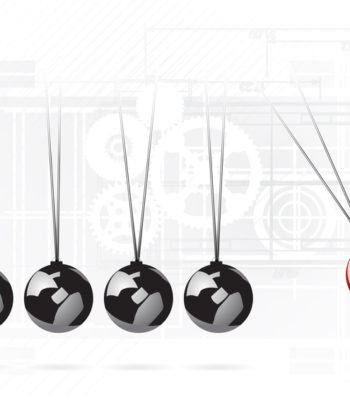
How to Address New Products and Technologies That Threaten To Disrupt Your Business
In a recent issue of Fortune magazine, an article “The War on Big Food” highlighted how major packaged-food companies are losing market share due to consumers opting for more fresh and organic foods. In the article, Steve Hughes, a former ConAgra executive who now runs Boulder Brands commented, “…this is the most dynamic, disruptive, and transformational time that I’ve seen in my career.” Steve’s quote reflects how many times over the last several years our own business-to-business (B2B) clients have encountered disruption due to new products and technologies. We are seeing it more and more frequently and B2B companies need to be prepared.
Over the course of our work, we have seen these new products and technologies threaten an organization’s core products, leaving senior leadership to make major decisions on how to move their organizations forward. Threats can emerge from different places along the customer chain—a direct competitor can bring to market new product innovation. Your channel partner can be threatened by new technology, which also can challenge your business model. First and most importantly, however, any organization facing disruption needs to ensure that the new product/technology actually will threaten its core business.
When examining a technology challenge to your product line, questions about evidence of potential market share decline, and cannibalization possibilities should you acquire or develop a similar technology need to be addressed. Whether product lines are highly engineered or have been in use for multiple decades with minimal specification changes, we have seen disruptive technology occur. For example, new sealing materials, including more resilient, tougher composites for application in industries from automotive to aerospace to life sciences will not only revolutionize the ultimate product but also the equipment, approaches, and factory protocols needed for applying these new materials. Traditional polymers used for decades will be replaced by these reinforced composites and the welding technology will also change.
In another example, our client was concerned about the emergence of a newer instrument that threatened to upend its traditional, high-quality, premium-priced meter business. After careful study, we learned that although the newer meter technology was becoming more adopted, the overlap of application was less prevalent than previously identified. Customers applied the newer alternative metering technology on larger equipment. Because the overlap was minimal, the client’s concerns about new technology cannibalizing its core business was minimal.
Similar analysis needs to take place when examining disruptive changes underway in your channel. One client we worked with believed that a new technology would threaten its existing business. After we assessed the situation, it was determined that the new technology would not uproot the company’s existing business. We have studied, for example, the emergence of B2B e-Commerce in China and have learned that while Internet purchasing by consumers is proliferating in China via mammoths such as Taobao, the B2B eCommerce providers, including Alibaba, Jingdong (JD.com), and others have not evolved as rapidly as their B2C cousins.
Once an organization determines that the new product/technology will indeed threaten to cannibalize its existing line of core products, it has to decide:
- If it will embrace the new product/technology, which becomes the driver for bringing new business models to the table, OR
- If it will develop a defensive strategy to protect its current state of business
One client we worked with recognized the value that would be created for a variety of parties by use of its remote diagnostic and predictive maintenance technology for its capital equipment. Blue Canyon identified and presented various business models and concluded that the value of the information would be extremely beneficial to the client in helping its customers to more accurately plan for maintenance and repair field services. With this predictive capability, the customer could lengthen the life of the capital equipment through a better maintenance program. Additionally, by monitoring the incidents for maintenance throughout the life cycle of the installed capital equipment, would give our client powerful data analytics to make more informed decisions regarding next generation product development.
Our client could have perceived this technology to be a threat and acted defensively to protect its core installation and new and replacement equipment business. However, the client determined that customers would applaud this capability, would continue to be loyal to their brand, and ultimately be better off. Our study indicated that the technology answered an unmet need and suggested that the model would be highly sought after by customers in the industry. By adopting a new business model the company expects to achieve a first-mover advantage over the market, extend its reach into managing after-sale service, and, over time, gain revenue that is a large multiple of that from new equipment sales alone.
Suppliers should not only be aware of how disruption can impact their business, but how to make the best choice so that everyone along the customer chain can be successful. Then and only then, can the supplier be in a position for sustainable, profitable growth.



